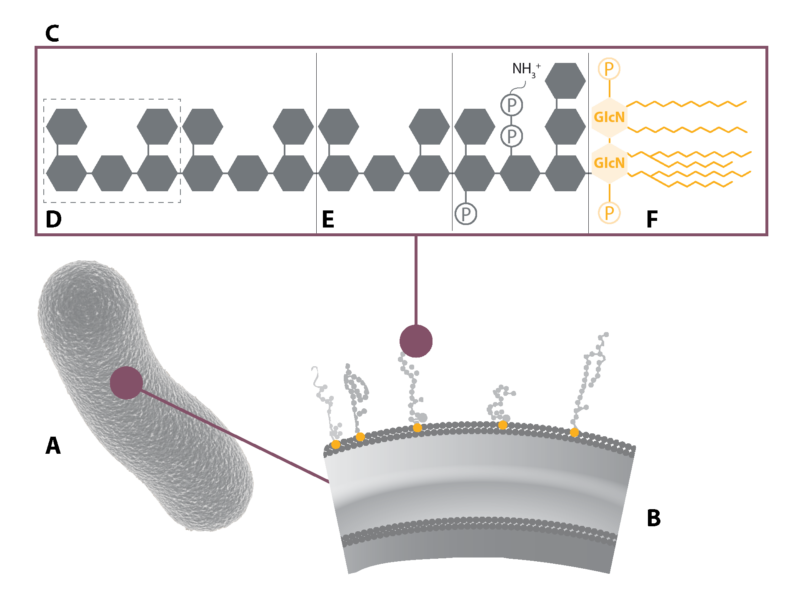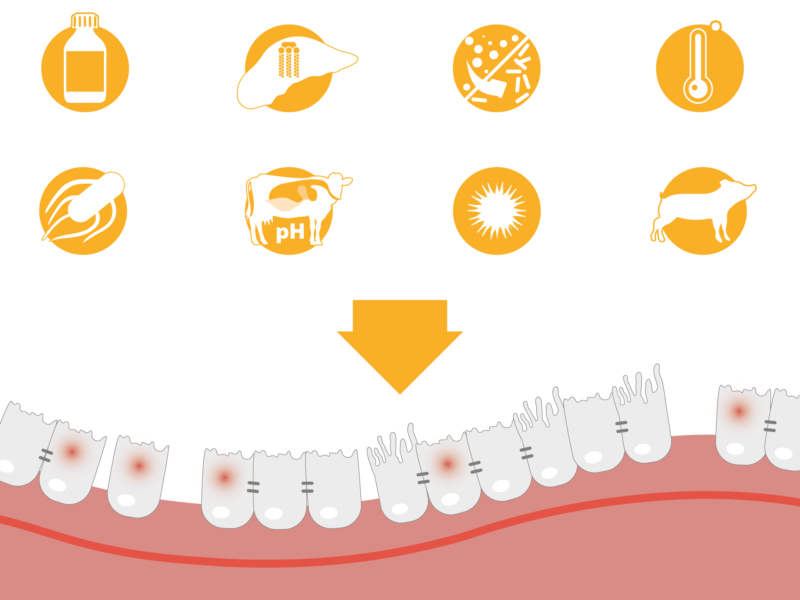Endotoxins explained!
Endotoxins are….

Endotoxins are …
Endotoxins are toxic compounds from bacterial origin. The most well-known endotoxins are lipopolysaccharides (LPS), which are part of the cell wall of Gram-negative bacteria (e.g. E. coli, Salmonella). LPS from all Gram-negative bacteria, commensal or pathogenic, share the same chemical structure, being an outer O-polysaccharide, an inner R-polysaccharide and a lipid A moiety. The latter carriers the endotoxic activity of LPS and leads to the activation of the immune system. This lipid A endotoxicity varies between different bacteria and depends on several structural factors.
Endotoxins are present always and everywhere!

During normal bacterial division and lysis, LPS molecules are released from the bacterial outer membrane into the environment, such as the air, water, soil and gastrointestinal tract (GIT). The GIT of production animals is colonized by various microorganisms, including a vast amount of bacterial species forming the largest population of the gut microbiota. Therefore, endotoxins are especially abundant in the gut of production animals.
The gastrointestinal tract is the most important source of endotoxins. Once endotoxins pass the intestinal barrier, via paracellular or transcellular pathways, they trigger an inflammatory response consuming energy and nutrients needed for growth and production. Hence, an efficient gut barrier is essential to prevent the translocation of endotoxins. However, several factors (e.g. heat stress, mycotoxins, pathogens, feed transition, weaning) are known to increase gut permeability, promoting leakage of endotoxins.
Endotoxins induce inflammation
Once in the circulation, endotoxins induce an inflammatory response which consumes a lot of energy and nutrients at the expense of the production of meat, eggs and milk. Also, endotoxins can trigger multiple metabolic disorders such as lameness and fatty liver. In the worst case, high amounts of endotoxins result in septic shock and even death.
Novel strategies to protect animals against endotoxins
It is apparent from the discussion above that novel strategies need to be developed to reduce the negative effects of endotoxins. Especially, measures should be taken to minimize leakage of endotoxins across the GIT. This can be achieved by enforcing the gut barrier function and by reducing both the amount and toxicity of endotoxins residing in the lumen of the GIT.
Nutrex developed a new innovative feed additive, EndoBan, by combining different strategies to help farmers and feed mills to counteract problems related to endotoxins in order to protect the animal’s health and improve performance.
References are available upon request.
Contact us for more information!
